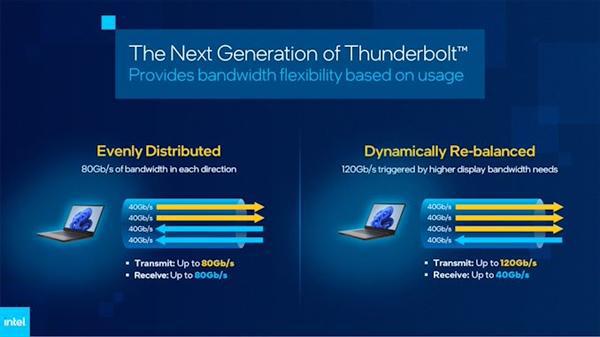120Gbps speed is 3 times faster than Thunderbolt 4! Intel previews next-generation Thunderbolt interface for the first time
136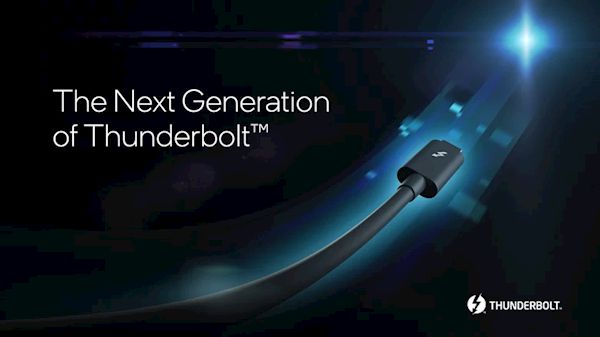
After the official announcement of USB 80Gbps (original USB4 v2.0), Intel also previewed the next-generation Thunderbolt interface for the first time.
Intel has not used the term “Thunderbolt 5” for the time being, but judging from years of practice, it should not be able to run.
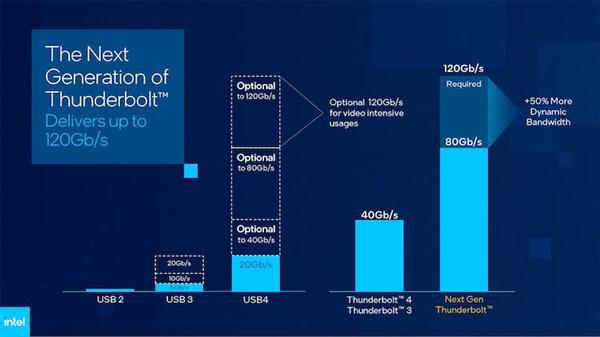
“Thunderbolt 5” claims to have three times the speed of Thunderbolt 4, which is 120Gbps, but this is a special mode, which is mainly used in scenarios such as single-line connection to high-end displays. With the help of PAM3 modulation technology, it can achieve upstream 120Gbps (transmitting end), Downlink 40Gbps (receiving end), that is, asymmetric splitting.
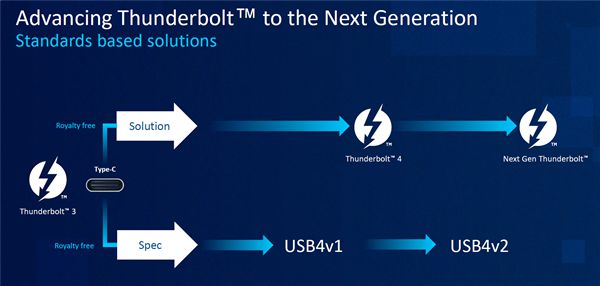
For two-way peer-to-peer transmission, the maximum transmission rate of “Thunderbolt 5” is still 80Gbps.
Therefore, “Thunderbolt 5” can drive 4K 240Hz or 2K 480Hz display output, etc.
In other respects, “Thunderbolt 5” is compatible with Thunderbolt 4 cables up to 1 meter long, supports DisplayPort 2.1 signal transmission, and doubles PCIe transmission speed (external independent display, etc.).
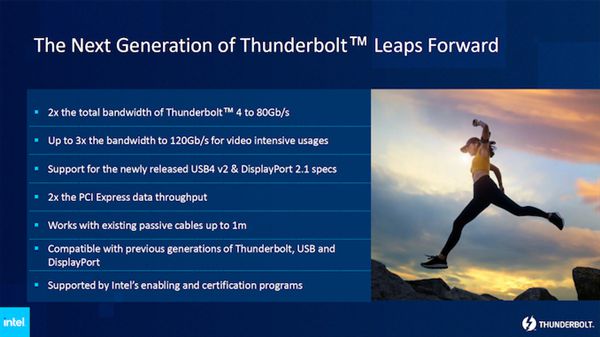
A strange situation is that USB4 was developed based on Intel’s open Thunderbolt standard. This time, Intel actually said that “Thunderbolt 5” was developed based on USB4 v2…
In response, Julie Sigler of Intel Corporation explained that USB4 v2 defines many features, and many of them are optional rather than mandatory. “Thunderbolt 5” represents the high-level form of USB4 v2 and is almost the most complete solution. For consumers and users, to get USB4 v2, you need to investigate which features it supports, but “Thunderbolt 5” does not need it, and almost all features are supported.
As planned, Intel will announce the official name and more details of the next-generation Thunderbolt interface in 2023 (such as whether the power supply capacity can reach 240W). There are already calls for Thunderbolt 4 v2. I hope Intel will not do this…
